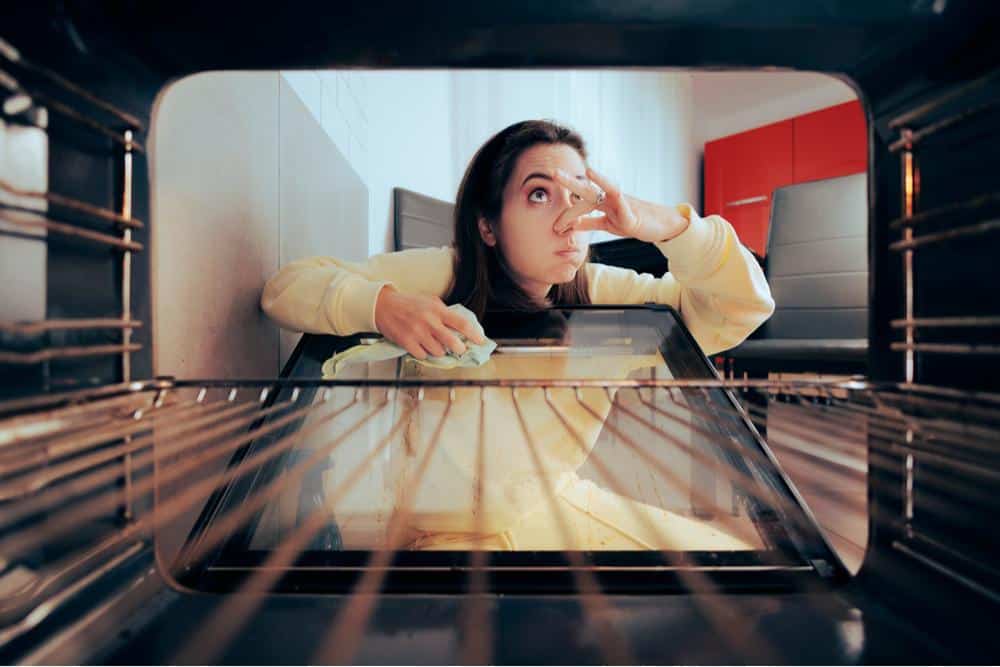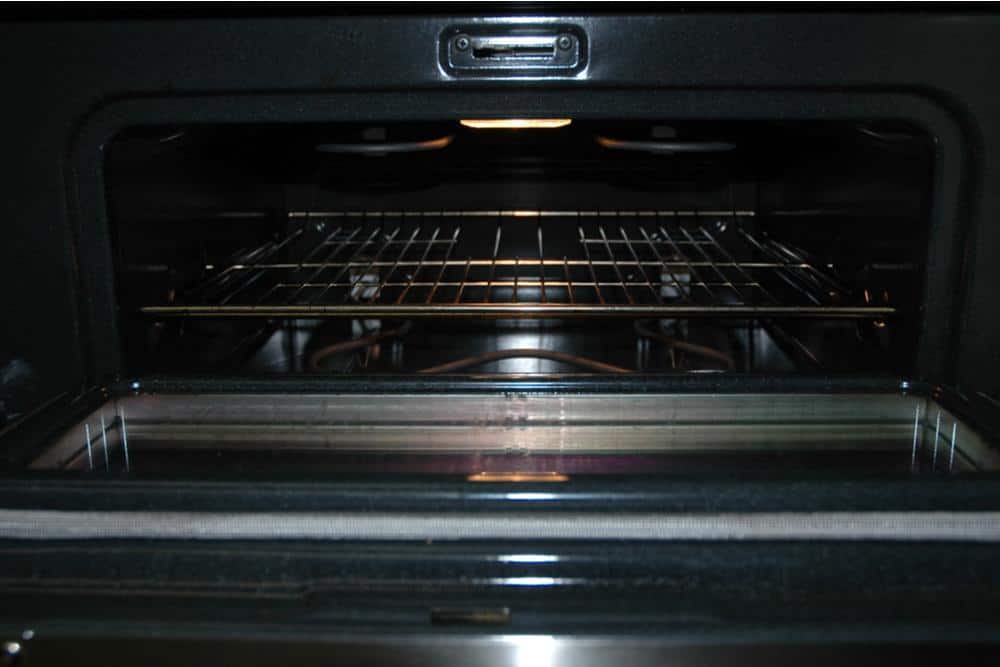You might not have clicked on this expecting self cleaning oven pros and cons to be a highly divisive topic, but you would be wrong about that. For every stance you could take on the appliances, some people think they are incredible, and others insist on the opposite.
Will the self cleaning cycle break your oven? Experts cannot agree. Are there advantages to the self-cleaning feature? A range of opinions exists on whether or not it is worth it. Is the feature likely to kill you? Reports vary. Can it kill you? Absolutely. Conversely, some will argue that just because individuals have died because of the self-cleaning feature before does not make it likely to happen again.
Many homeowners swear by the oven’s self-cleaning feature. Individuals even say that a self cleaning oven is more energy efficient because the insolation required for a self cleaning feature to work necessitates less energy to heat up when you are cooking.
Here is how a self cleaning oven works in a nutshell. It heats up to incredibly high temperatures and sears all of the food matter and mess from the metal. Incredibly cool? Yes. Dangerous? Also yes, though not for the reasons you might think.
We’re not talking about the “Final Destination” scenario where you end up crawling too far into the oven and it gets turned on somehow. We’re not even talking about it exploding and causing a house fire. The answer is something far more mundane but no less dangerous.
When those bits of food matter heat up to the extreme temperatures necessary to clean the oven, they can release a dangerous amount of carbon monoxide gas into the air. According to the previous article from Iowa State University, high concentrations of gas can kill a human being in five minutes.
A self cleaning oven almost sounds like something out of “The Jetsons” until you know how it works. The appliance does not have robot arms scrubbing for you so you can avoid the work. It just provides heat. It lets you turn your oven into a crematorium for food mess.
Most self cleaning ovens sear off the stains and other matter at temperatures exceeding 800 degrees. What remains, in the end, are ashes, simple enough to wipe away with a wet washcloth-after the whole thing cools down again, of course. Those high temperatures can easily cause injury, so you will want to wipe ashes away with care.
Of course, some insist you will not find a better clean than the one you can get by burning the stains all away as if no amount of scrubbing could compare. Others still argue that running your oven at temperatures that high has a detrimental effect on the appliance’s health.
There is a mix of opinions on whether or not the high-temperature theory is true. Some experts say that using the self cleaning feature has caused a problem in so few ovens that it is not worth taking into account.
Others (electricians who have noticed a pattern in the machines people ask them to repair) believe that repeated usage results in wear and tear that will eventually cause your oven to break down before a reasonable time. When deciding to clean your oven or make the self-clean feature safer, consider the advice of experts.
According to FEMA, more than 1,500 people die each year from carbon monoxide poisoning. Not all of those deaths are related to self-cleaning oven fumes and smoke - and compared to other causes, that is pretty low. To put that into perspective, 38,680 people died in car crashes in 2020, yet we continue to drive.
However, the number is high enough to prove that a person can inhale a lethal dose of carbon monoxide. Using the self cleaning feature on an oven can make it far more likely. There are steps you can take to mitigate the dangers of course, such as opening windows for ventilation, but that still does not solve every problem associated with the dangers.
The gas emitted from a self cleaning oven is far more likely to harm or kill pets, especially birds. There is a reason for the phrase “a canary in a coal mine.” Birds are specifically made to take in a lot of air to their bodies to support flight. So if the oxygen is thin, they will be the first to die.
In the mining days, workers brought birds into the mines as an early detector of gas leaks. If the bird stopped singing or died, the miners knew to get out before the fumes started to affect them, too. The birds did not usually survive the experience, and if there is a bird in your home, odds are it’s a pet and not a primitive carbon monoxide detector.
No one wants their beloved pet to die in a self cleaning oven carbon monoxide incident, and even ventilating your house will not clear the gasses out enough to keep your pets safe. The gas can harm pets of all species, especially cats and dogs because they are much smaller than humans.
We’ve already covered the fact that carbon monoxide is the main gas you have to worry about with a self-cleaning oven. In case you were wondering, the way it kills you is by bonding to your lungs in place of oxygen.
Your respiratory system functions how it is supposed to, but the gas you are inhaling is not carrying anything through your blood. Essentially, you can still breathe, but you suffocate anyway.

Self Cleaning not Only Smells Bad - the Fumes Can Be Dangerous
That seems pretty bad to me on its own, but carbon monoxide is not the only concern associated with such high temperatures. Carbon monoxide is an odorless, tastless, colorless gas. So, carbon monoxide isn't responsible for that "self cleaning oven smell".
What Causes the Self Cleaning Oven Smell?
There are other dangerous fumes that can be released during the self clean cycle. These toxic fumes are characterized by a very unpleasant burning smell.
Food particles can be burned away - and in many cases can be dangerous if inhaled. The food matter that your gas electric oven sears away produces different chemicals that researchers have linked with an increased risk of developing cancer. The studies in question were done in regard to ingesting these chemicals, so we do not know that inhaling them will cause the same effect.
In some cases, the oven liner and material on the oven racks can release gasses due to the extremely high temperature of the oven's self cleaning function. In many cases, the enamel lining of your oven is suitable for cooking, but not for the extreme heat associated with the self clean feature. These toxic gasses also present a health risk.
Like everything else related to the topic of ovens, it is a point of contention whether or not homeowners can safely run the self clean cycle on an oven. However, some believe it can be. I would be remiss not to mention both perspectives, just as much as I would be in failing to describe a safe outline of the process.
Of course, the first step is to be aware of the dangers. Once you have familiarized yourself with what could happen you have a better idea of what is likely to occur and how to avoid the worst of it. What homeowners should avoid is losing control of the situation when their oven is so hot.
We are talking both in terms of the potential for carbon monoxide to smother you in your sleep and the idea that your oven might break down while you are taking a walk to get out of your carbon monoxide-filled house.
A carbon monoxide detector is not going to stop a dangerous amount of the gas from being released into your home, but it will alert you if that starts to happen so that you can get to a safe place.

The goal: a clean oven
Naturally, one of the early steps to being able to use the self cleaning feature on your oven safely is to prepare for it in advance and have a carbon monoxide detector ready to go to give you the heads up.
Try to make sure the oven is as clear and clean as possible before you activate it. That means scraping off large chunks of dried food with tools that won't scratch the inside of your oven. Use a damp cloth and remove any grease that is present within the oven.
Extra metal means extra items to heat up and possibly cause a house fire. Extra food matter means more burning things to create gas, both the carbon monoxide and the potentially carcinogenic kind.
You may be thinking removing food and pans defeats the purpose. You want to use your oven’s self cleaning feature, after all, so that you will not have to scrub the inside of the oven. The items do not have to be so clean that you are doing the cleaning for your oven. Knocking off anything that does not hold up to a pass with a tool can only help you.
Make sure the room you are using your self cleaning oven in is well ventilated. It helps if the gas has somewhere to escape. Particularly, you want to make sure the oven is ventilated because a little bit of gas getting out into the air at a time is better than all of it at once when you open the door later.

Oven after a self cleaning cycle
Another point is not to use the self cleaning feature too often. The idea is that your oven is far less likely to wear out the fewer chances it has to do so. Homeowners should only use their oven’s self-cleaning feature once a year at most.
Furthermore, you must make sure your oven is locked before you start the cleaning cycle. One thing you do not want is someone opening the oven door while your oven is gaining temperatures with lows in the 800s.
You may be reading this article while your oven is already pretty messy, but you should still clean the appliance regularly to keep it clear from larger debris. Whether you think the self cleaning oven feature is a true godsend or you believe people should never use it under any circumstances, there is no quick and easy solution to cleaning. Not even a self cleaning oven provides guaranteed cleanliness.
An over the counter oven cleaner is one of the main alternatives to using the self cleaning oven feature. Note that an oven cleaner you buy at the store may be highly caustic and comes with its own inherent risks.
You can find all natural / organic oven cleaner options at many stores. You'll avoid the toxic fume risk that comes with the high heat self cleaning process. The effectiveness of all natural products will vary widely by product.
You can make your own oven cleaning solution using natural chemical-free ingredients like dish soap, baking soda and/or vinegar. Distlled white vinegar can be extremely effective at not only cleaning the inside of the oven, but for cleaning your oven racks as well.
